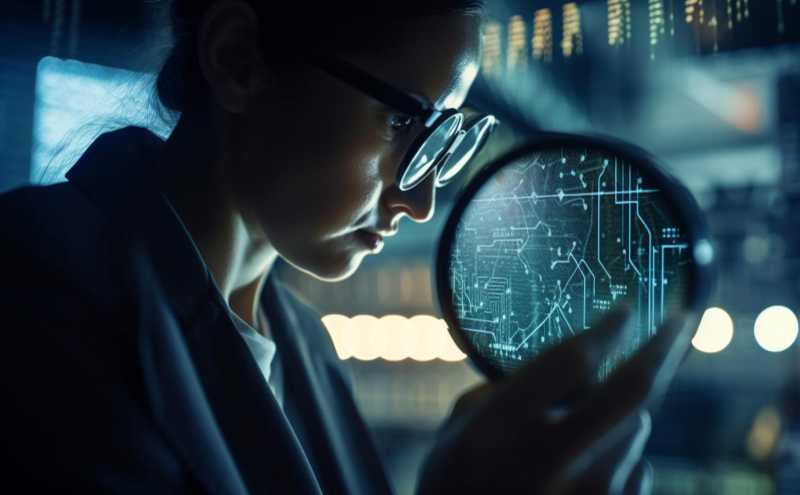Forensic design is a fascinating field that combines elements of design, technology, and investigative methodologies to analyze and interpret objects, interfaces, or systems for legal or forensic purposes. It applies design principles and methodologies to assist in legal investigations, often in cases involving accidents, product failures, crime scenes, or user interfaces. This multidisciplinary approach not only helps in uncovering crucial evidence but also in presenting complex information in a visually compelling and understandable manner, aiding in the pursuit of justice. By bridging the gap between design and forensic science, forensic design plays a crucial role in modern investigations, offering unique insights and perspectives that traditional methods may overlook.
Forensic Design and UX

Understanding Forensic Design in Various Context
Forensic design is a field that combines elements of design, technology, and investigative methodologies to analyze and interpret objects, interfaces, or systems for legal or forensic purposes. It applies design principles and methodologies to assist in legal investigations, often in cases involving accidents, product failures, crime scenes, or user interfaces.
1. Accident Reconstruction

Accident Reconstruction
Forensic designers use their skills to reconstruct accidents by analyzing the design of vehicles, road layouts, and other relevant factors.
2. Product Failure

Product Failure Analysis
Forensic designers employ their expertise to investigate product failures by analyzing the design and functionality of various products.
3. Crime Scene

Crime Scene Investigation
Forensic design involves analyzing the layout of crime scenes, blood spatter patterns, or the arrangement of physical evidence.
Artificial intelligence and Forensic Design
Artificial intelligence and Forensic Design converge as an interdisciplinary field, seamlessly blending the realms of technology and investigative methodologies. This innovative domain applies advanced AI algorithms and design principles to analyze and interpret various objects, interfaces, or systems for legal or forensic purposes. Its applications extend to diverse scenarios such as accidents, product failures, crime scenes, or user interfaces, where AI-driven insights play a pivotal role in enhancing forensic investigations.
1. Automated Analysis

Automated Analysis and Pattern Recognition
AI algorithms can automate many of the tedious and time-consuming tasks involved in forensic analysis, such as image and video analysis, fingerprint comparison, and DNA profiling.
2. Evidence Processing

Advanced AI Solutions for Enhanced Evidence Processing
AI can enhance the processing of various types of forensic evidence, including:
Fingerprint analysis: AI algorithms can identify and compare fingerprints with unprecedented accuracy,
find and extract crucial evidence. even in cases where fingerprints are partial or obscured.
DNA analysis: AI can automate the analysis of DNA samples, reducing the time and effort required to identify suspects or match DNA to crime scenes.
Image and video analysis: AI can identify and classify objects, faces, and vehicles in images and videos, helping investigators quickly
3. 3D Crime Scene

Generative 3D Crime Scene Reconstruction
AI-powered generative models can create realistic 3D models of crime scenes, allowing investigators to virtually revisit the scene and better understand the events that took place.
4. Evidence Visualization

AR Overlay for Evidence Visualization
Augmented Reality (AR) technology can overlay digital information onto the real world, providing investigators with a more immersive and interactive experience when examining crime scenes and evidence.
5. Predictive Modeling

Predictive Modeling and Risk Assessment
AI can be used to develop predictive models that can identify patterns and trends in crime data, helping law enforcement agencies anticipate and prevent future crimes. AI can also be used to assess the risk of reoffending, aiding in crime prevention and offender management strategies.
AR/VR and Forensic Design
Augmented Reality (AR) and Virtual Reality (VR) intersect with Forensic Design, creating a dynamic synergy between immersive technologies and investigative methodologies. This evolving field harnesses the power of AR/VR to analyze and interpret objects, interfaces, or systems for legal or forensic purposes. By integrating these technologies, forensic designers can reconstruct scenes with unparalleled precision, offering immersive experiences that aid in understanding accidents, product failures, crime scenes, or user interfaces. The fusion of AR/VR with Forensic Design marks a transformative leap in enhancing the depth and accuracy of forensic investigations across diverse contexts.
1. Documentation

Enhanced Crime Scene Documentation
AR/VR technology can provide investigators with a more immersive and detailed record of crime scenes, allowing them to capture and preserve evidence in a way that traditional methods cannot.
2. Interactive Scene

Interactive 3D Crime Scene Reconstruction
AR/VR can be used to create interactive 3D models of crime scenes, allowing investigators to virtually revisit the scene and explore it from different angles and perspectives.
3. Immersive Visualization

Immersive Evidence Visualization and Analysis
AR/VR can provide investigators with an immersive experience when examining evidence, allowing them to visualize and manipulate objects in a virtual environment.
4. Virtual Training

Virtual Training for Forensic Professionals
AR/VR can create realistic and interactive training environments for forensic professionals, allowing them to practice and refine their skills in a safe and controlled setting.
5. Collaborative Forensic Investigations

Collaborative Forensic Investigations
AR/VR can facilitate remote collaboration among forensic investigators, allowing them to share virtual crime scenes and evidence in real-time. This can expedite investigations, especially when dealing with geographically dispersed crime scenes or collaborating with experts across different jurisdictions.

